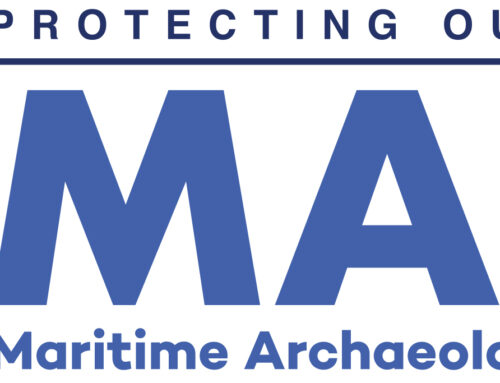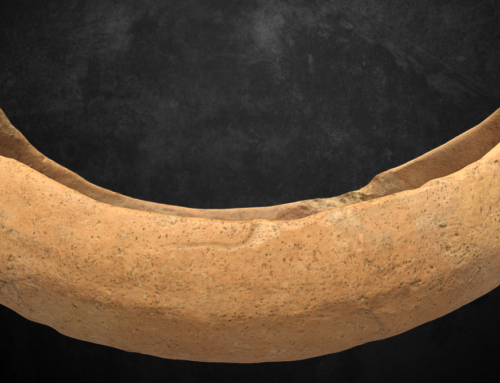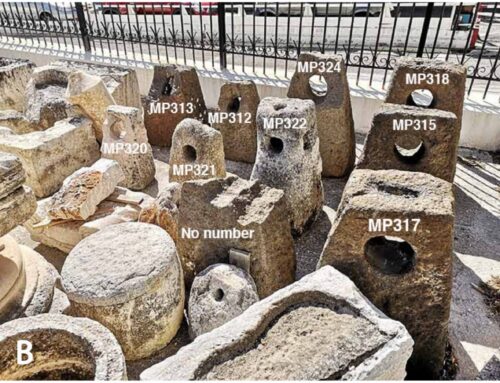A comparative Tool Mark and Fastener Database for Maritime Archaeology – 2017
Thomas Dhoop, Michael McCarthy and Catriona Cooper

Fig 1. Example of sheathing tacks of a copper alloy from the fasteners database – Western Australia Maritime Museum.
Introduction
On 6th January 2016, Thomas Dhoop, Michael McCarthy and Catriona Cooper were awarded a grant by the Honor Frost Foundation towards the creation of a comparative tool mark and fastener database for maritime archaeology. This interim report describes the progress made on the deliverables.
Fasteners Database
The funds reserved for the creation of the fastener database have been dispersed. Data collection and digitisation was completed by Dr Michael McCarthy. The dataset comprises 83 entries consisting of images and associated descriptions – as well as a glossary of terms – of metallic and organic fasteners found on ships from around the world (Fig. 1). This dataset is currently being made searchable in the database system.
Toolmarks Database
The funds for RTI processing and analysis have been dispersed – 48 Reflectance Transformation Imaging (RTI) models of wood samples have been produced, as well as the required metadata of the Mesolithic and Medieval tools used to create the markings. Furthermore, in collaboration with the Maritime Archaeology Trust, UK, 10 RTI files were made of tool marks found on archaeological wood fragments from the Mesolithic underwater site at Bouldnor Cliff (Solent, UK) (Fig. 2). Additionally, the grantees have conducted a comparison between RTI recording in the field using a mobile set up versus recording under laboratory conditions using an RTI Dome. Also 11 scans were made using Structured Light Scanning (SLS) for comparison with the RTI technique (Fig. 2). The findings of this work will feature in the Internet Archaeology journal article. During the spring of 2017, more scans of experimental wood samples are planned in order to create a more comprehensive dataset. Particular attention will be paid to Bronze Age tools.

Figure 2. RTI image (left) and structured light scan (right) of BC_NoID5, a Mesolithic fragment of wood from Bouldnor Cliff (Authors).
Searchable Online Database
The funds to host both databases have been dispersed, securing the necessary space on MaritimeArchaeology.com. This required updating the website hosting, security, and template.
The creation of the databases is a three-stage process;
1. research to determine the most appropriate management system,
2. design and creation of the database,
3. populating the database.
Determining the management system requires up-to-date knowledge of current systems available as well as a sound knowledge of the functionality required by the dataset. As the toolmark and fastener database will be hosted on a community- based website, the database naturally needs to be web-based but will also need to be free to create and maintain. Spatial data is currently not a requirement which means that a number of integrated systems are not appropriate for the project.
These simple requirements mean a number of database systems most commonly used will not suit our needs.
The team have planned to implement a WAMP server and have had good experiences of its use in the creation of other finds databases. However, the WAMP server requires a good working knowledge for maintaining live databases and the use of server and client systems. The database we create needs to be possible to maintain by other users who may not have this knowledge in the future. Implementing an Ark database would appear a sensible option as it is designed with archaeologists in mind. However, it is in essence based on a WAMP server, therefore suggesting that, given the team’s experience of previous implementations, nothing would be gained by this implementation. The next stage of design and implementation is underway and will be completed in March 2017 by Cooper and then the process of populating the database with current data will begin.
Internet Archaeology Article
The funds for open access publication in Internet Archaeology and storage on the Archaeological Data Service have not yet been dispersed. The article is currently in a draft stage and funds will not be paid until final submission of the finished article. This final step in the process is expected to be completed during the fall of 2017.






